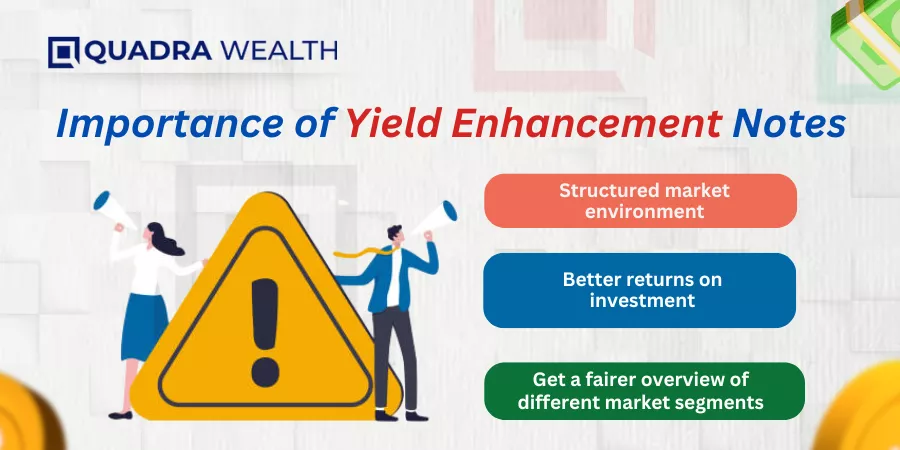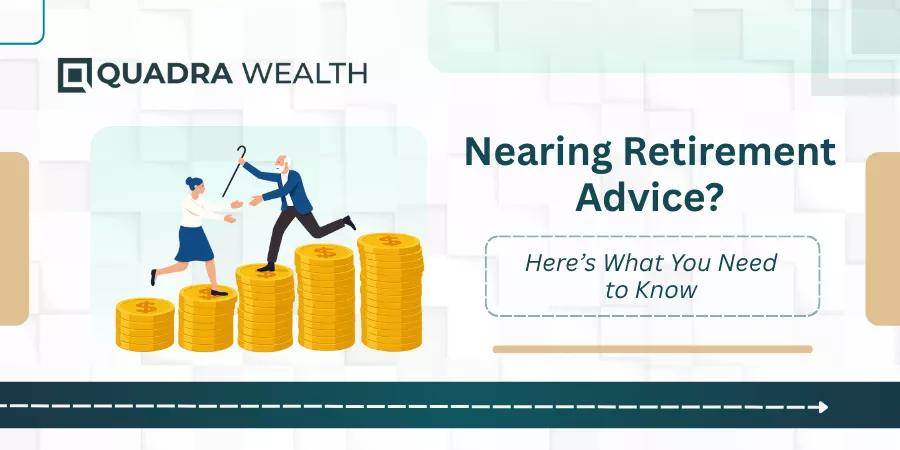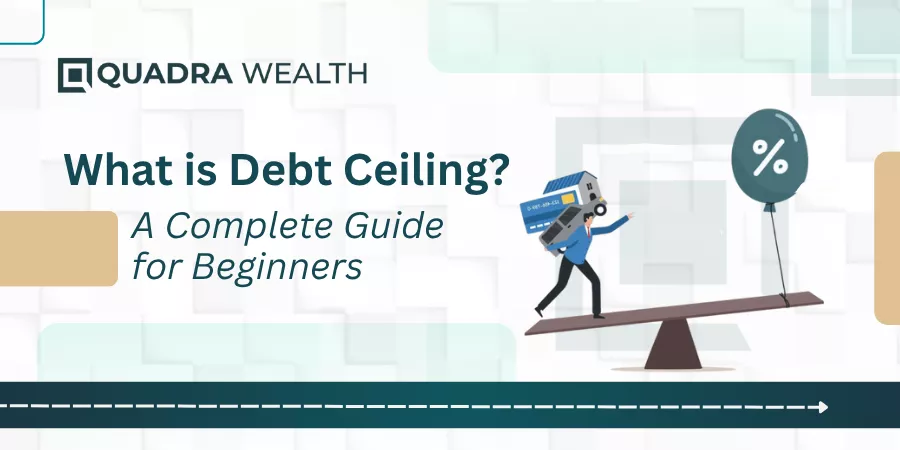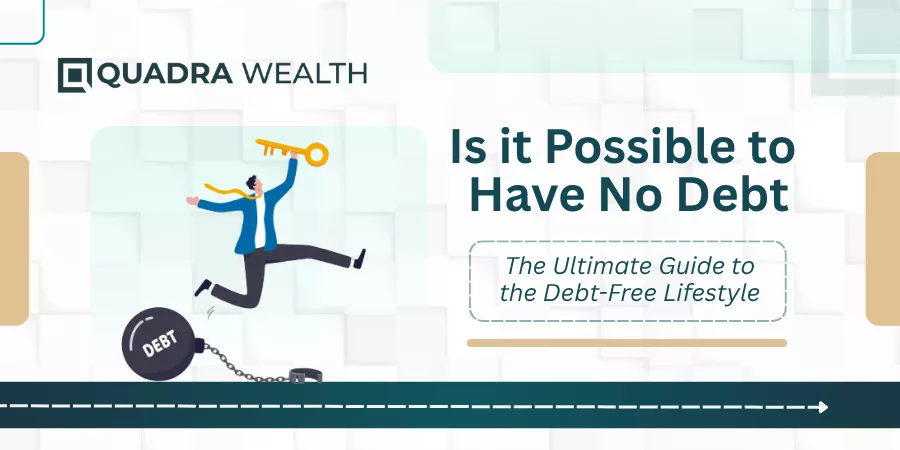Introduction
Yield Enhancement Notes refer to structured notes that are capable of garnering better rates of returns over traditional types of investments like bonds, equities, and fixed-income securities. However, there are risks involved as these notes are tied with currencies, stocks, and other market indices, to name a few.
Therefore, you must deal with quite a number of volatile risks inside markets while you deal with Yield Enhancement Structured Notes. Let us help you unveil the entire know-how behind how yield enhancement notes operate in the market. Helping you get started further:
What are Yield Enhancement Notes- Meaning and Conceptualization Explained
Yield Enhancement Structured Notes are notes that are particularly designed to fetch higher yields as against traditional investment options. These notes can be customized according to the investment objectives an investor has in mind.
You can choose your tenor period and rate of interest and decide how much capital you are willing to invest in these dynamic notes. The notes underlie different investments like stocks, commodities, currencies, or a high-paying basket of bonds, to name a few.
This way, you build robust and diversified income-earning or wealth-generation portfolios that can help you achieve the short-term, medium-term, and long-term financial objectives you have in mind in a seamless manner indeed.
Who issues Yield Enhancement Notes?
Yield enhancement notes are customized structured notes usually issued by banks, investment-grade financial institutions, and privately owned investment corporations, also known as wealth management firms.
Independent wealth management practitioners also customize yield notes by calculating the risk tolerance ratios of every independent investor. This is done wherein the wealth managing expert talks to the investor and discusses the financial objectives the investor has in mind.
It can be retirement planning, estate management, tax planning, or a whole lot of holistic investment solutions. The discussion is also made with respect to the corpus amount the retail or institutional investors have at their disposal. The risk tolerance ratios and the financial objectives of individual investors are arrived at to help the wealth management team allocate the right type of assets into every individual investor’s portfolio.
The underlying assets can be a mix of stocks, bonds, commodities, currencies, or a basket of high-paying shares, to name a few. Soft core or hard core capital protection options like ‘Call Option’ or ‘Put Option’ are also embedded on yield enhancement notes so that these notes garner far better returns for the investors as compared to traditional bonds or equities on the whole. This way, the investor’s portfolios grow at a slow and steady pace indeed.
However, the investors assume the risk of underlying assets going below pre-set levels or barrier limits as connoted in the investment parlance. Here, the investors might lose a partial or complete value of their capital or principal investment.
What are the key features of Yield Enhancement Notes?

These are the key features of yield enhancement notes. Let us have a rundown of pointers corresponding to the same:
Presence of Underlying assets
Yield Enhancement notes must have a group of assets that underlie them. This is because the upside gain of underlying assets is what is going to boost the value of the portfolio for the investors. The underlying assets can be stocks, etfs, indexes, or a basket of mixed financial instruments.
Tenor periods
Tenor periods are usually referred to as maturity periods. The yield enhancement notes come to you with tenor periods ranging from 3 months to about 2 years. When you choose structured notes, you can also choose your tenure periods with product issuers.
Unveiling more about coupons/ yields
You can customize the rate of interest earnings that you expect from yield enhancement structured notes. You must decide while these notes are being designed and cannot alter the embedded terms and conditions once you have already signed up for procuring the notes.
The coupons or yields that you receive from the notes are not fixed. The returns of investment rely upon the performance of underlying assets these notes are tied to. And the coupons can be paid out quarterly, half-yearly, or annually.
Know more about strike rates/ barrier levels
The strike levels or barrier levels refer to index values the underlying assets are supposed to reach during the tenor period of the investment portfolios. Here, the initial purchase points are monitored by product issuance firms.
The rates are then compared to how long the prices of underlying assets increase or decrease under volatile market conditions to reach the final sale points or the set strike rates or barrier levels that have been pre-embedded into each of these notes.
This is the index factor that helps product issuers gauge the performance levels of underlying assets that the notes are tied with. At maturity, the final sale points are determined, and the product issuance firms decide how much capital amount and accrued earnings the investor can get while his portfolios are up for redemption.
Are yield notes principal-protected?
Yield enhancement notes are not 100% principal-protected. This is because these notes underlie equities, stocks, or etfs whose market prices are subject to change rapidly. Therefore, if the assets undergo market losses on account of global outbreak of pandemic/ recessions or other unprecedented breakdowns, the capital value might depreciate for investors, and this is the market risk every investor may have to have under his pedestal.
What are the common types of Yield Enhancement Notes?
These are the most common types of yield enhancement notes that we have in store for you as such. Let us have a rundown into the same:
Auto Callable Notes
The underlying assets, therefore, are monitored against set barrier limits from time to time. When the assets reach their desired touch points, the notes stand redeemed instantly. The auto calls initiated by product issuers are treated as successful outcomes.
Therefore, the investors get their principal amount and accrued earnings on these notes even prior to their term of maturity.
Reverse Convertible Notes or RCNs
If the desired strike rates are achieved, investors can withdraw their principal amount plus earnings via cash or bank settlements. Otherwise, the asset converts into equity stocks based on the metrics the product issuance firms have arrived during that point in time.
Therefore, upon the maturity of the notes, you can either receive cash or equity stocks in lieu of your principal investment.
Digital Yield Notes
Digital yield notes pay coupon payouts as long as their assets stay within prescriber strike limits. When the barriers or strike rates get breached, then no coupons would be paid out to investors.
Working Example of how a Reverse Convertible Note operates in the market
Let us explore a working example of how an RCN operates in the market:
A: Tenor of your investment portfolio = 6 months
B: Underlying stocks: Apple and Tesla shares
C: Strike Rate: 80% of the purchase price
Now, as long as the shares of Apple and Tesla remain 80% of their nominal value or purchase prices, investors are guaranteed to get their principal and coupons back.
When the share prices fall below this limit, then the principal amount converts into equity shares in lieu of the same. The investor here does not get a cash settlement. He, however, receives Tesla and Apple shares at the prevailing market prices. The share value may be lesser in par value to your principal investment as such.
What are the primary risk factors for yield enhancement notes?
These are the primary risk factors that stay applicable for yield enhancement notes. Let us have a rundown into the same:
Market risk
The Returns on the investment completely depend on the market performance of underlying assets the yield notes or structured notes are tied to. Therefore, a poor performance of underlying assets can depreciate the value of your investment portfolio by a considerable extent indeed.
Credit issuing risk
If the product issuance firm of yield notes faces severe credit concerns or signs up for its bankruptcy or insolvency, then the investors may lose a major portion of their capital investment. Therefore, credit concerns of product issuance firms pose a major risk for investors, irrespective of how the underlying assets perform in the market.
Liquidity Risk
Yield notes may be difficult to sell unless and until you hold them until maturity. The notes might not sell at a profit inside secondary markets when you have immediate or impending financial obligations for which you might require immediate cash. You may not be able to realize the entire value of your capital investment under the given circumstances.
Complexity to learn or understand for a newbie
The notes comprise a mix of fixed bonds and derivative equities. These are hybrid investment options. The tenor periods, capital investments, and RoI differ from how regular or traditional bonds and fixed-income securities operate in the market. Therefore, the notes may seem complex for newbie retail investors to learn or understand.
Importance of Yield Enhancement Notes

Here are pointers that outline the overall importance of yield enhancement notes. Let us have a rundown into the same:
Structured market environment
Yield enhancement portfolios are not exposed to the extreme volatilities of the equities market. You get an overall degree of cap protection under moderately to mildly bullish overviews.
Better returns on investment
Yield enhancement notes offer better rates of investment than traditional bonds or fixed-income securities. Hiked performance levels of underlying assets help investors earn more lucrative capital emoluments like coupons, dividends, etc. Your interest levels compound when you leave your capital untouched until the maturity term of your asset portfolio ends.
Get a fairer overview of different market segments
Yield enhancement notes help you get an overview of how the markets operate for bonds, equities, or even futures with call or put options. This way, you become a more seasoned investor over a relatively shorter span of time.
The Bottom Line
You have different customizable options for Yield enhancement notes, and you get different sources of income like interest payouts, coupons, dividend earnings, etc. However, you must read the offer documents carefully before investing. What are your thoughts on this? Do mention it in the comments below!
Frequently Asked Questions or FAQs

Define Yield Enhancement notes
Answer: Yield Enhancement Notes are structured products that boost the yields for the investors. The notes protect the potential value of the capital vault while the underlying assets of the notes determine how much yield you receive on your investment portfolios. Yield enhancement products are particularly meant to diversify your income potential.
Who decides your initial investment deposit with respect to yield notes?
Answer: The investor and product issuing firm sit hand-in-hand to discuss the investment objectives of every independent investor. The risk tolerance ratios of the investor is arrived at and then the deposit value, underlying assets, tenor periods, and other parameters of the investment portfolios worked out. Yield notes enhance the potential returns the investor can earn as long as underlying asset prices hike in the market until the maturity date of the portfolio.
What is a credit risk for the investor?
Answer: If the product issuance firm defaults or shows poor credit concerns, then the investor runs the risk of losing the entire investment portfolio. The private firm can default if it signs up for liquidation or insolvency.
Can upside participation of underlying assets benefit investors?
Answer: Yes, upside participation of underlying assets can benefit investors if ceiling limits are not applied on investment earnings by product issuance firms. In exchange for downside protection of capital, some product-issuing firms apply tabs or ceiling limits on the earnings these investment portfolios can make.
The scheme of interest rates, investment decisions, and risks the portfolios carry must be discussed when you buy these classic notes with referenced assets. You must link what correlation these Yield notes have with respect to your regular investing options and understand the various types of structured notes on a neat platter.






